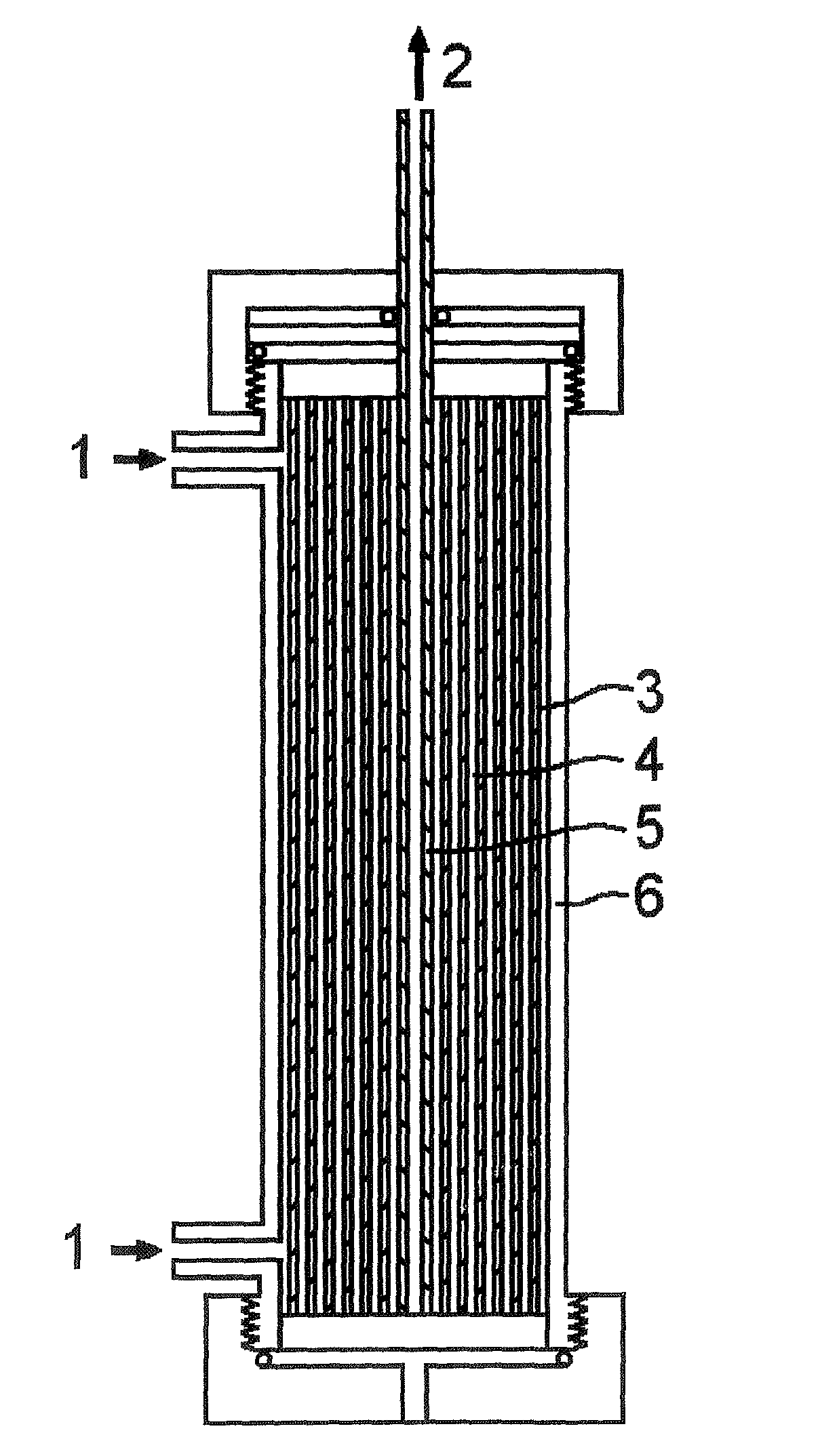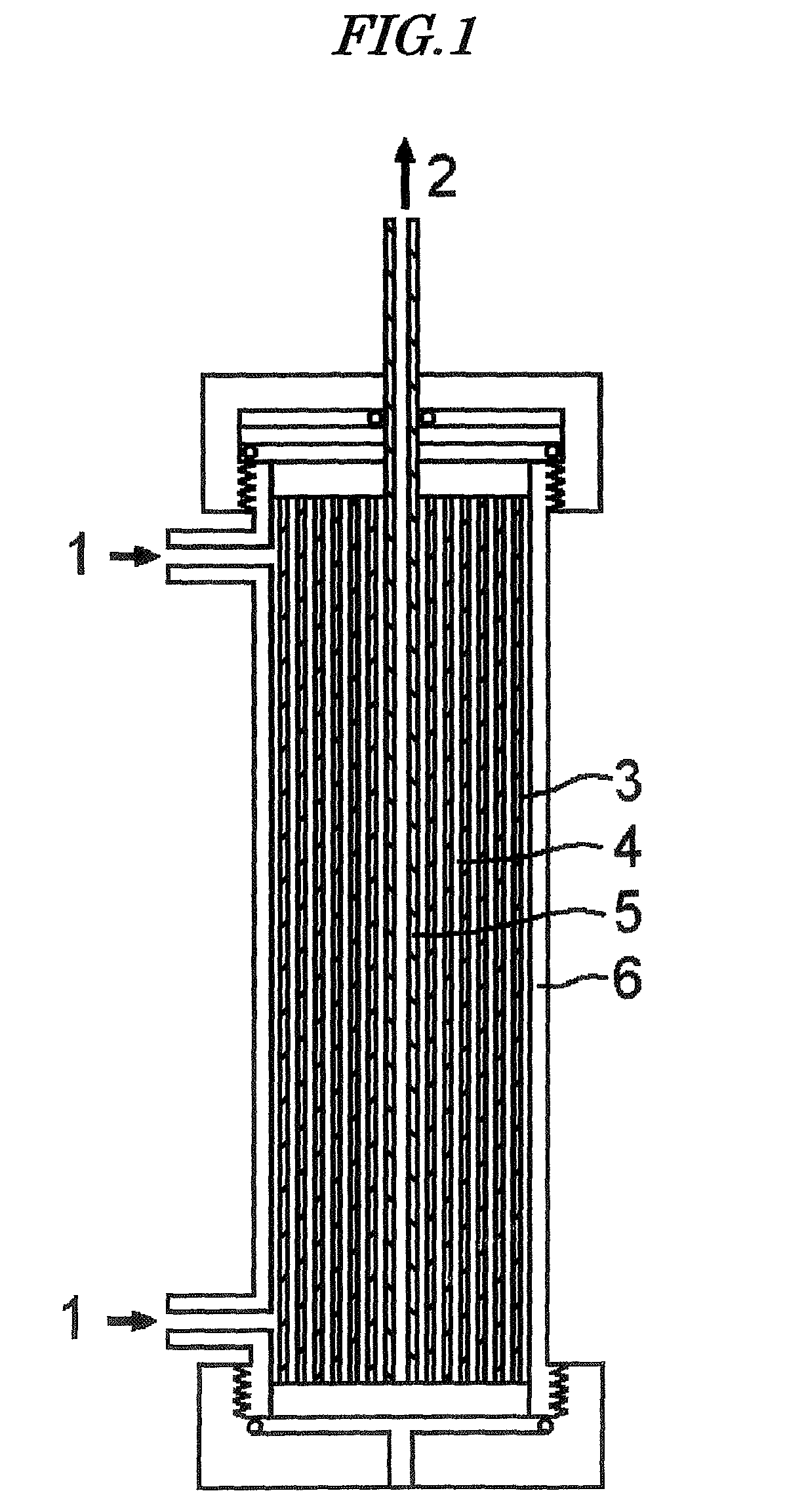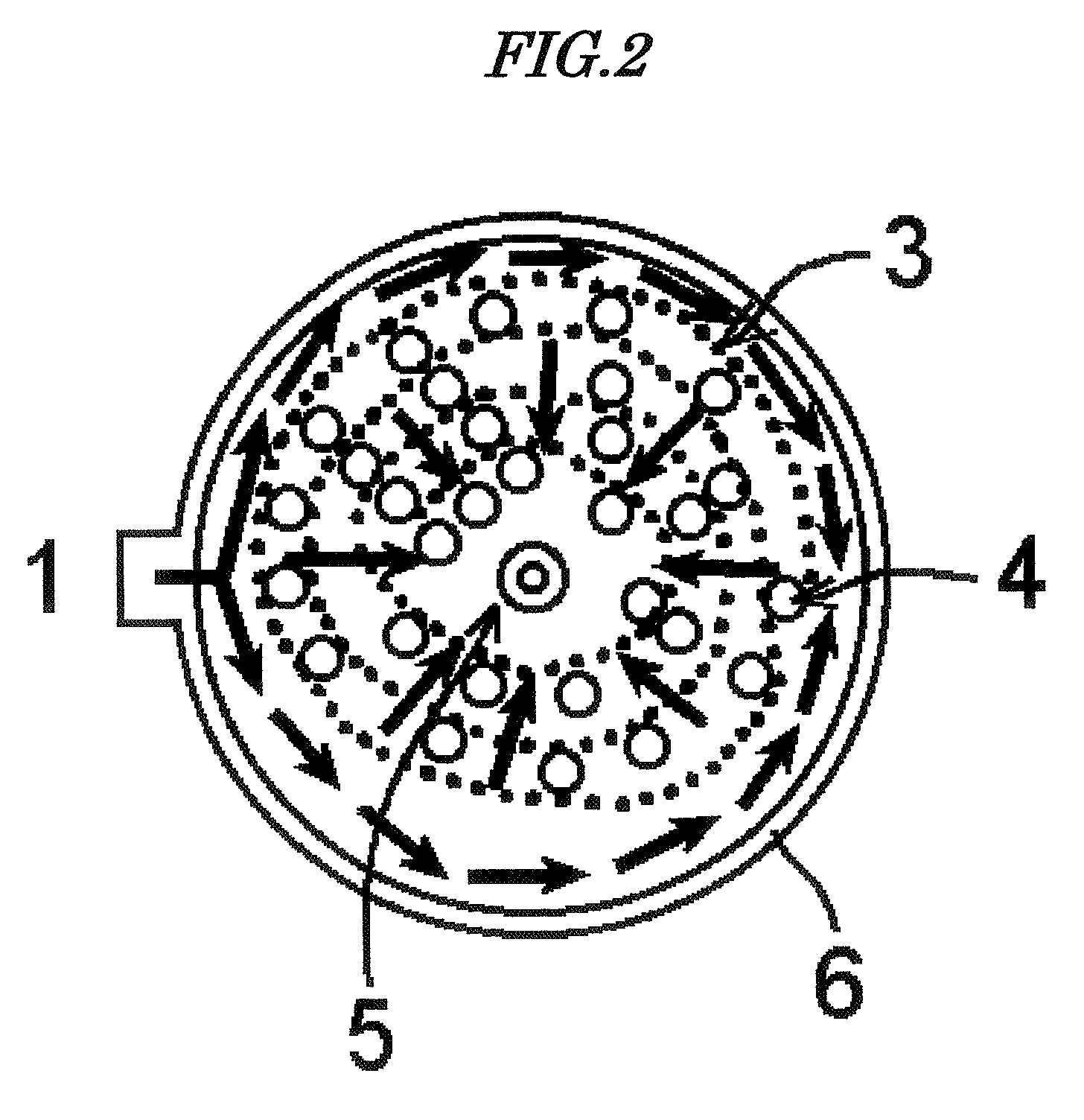Porous sheet-form material for cell culture, and bioreactor and culturing method utilizing same
a cell culture and bioreactor technology, applied in specific use bioreactors/fermenters, non-embryonic pluripotent stem cells, biomass after-treatment, etc., can solve the problems of difficult control of concentration, limited number of cells that can be grown, and insufficient supply of nutrient and oxygen, so as to achieve stable recovery of cultured or grown cells
- Summary
- Abstract
- Description
- Claims
- Application Information
AI Technical Summary
Benefits of technology
Problems solved by technology
Method used
Image
Examples
example 1
[0043]In the bioreactor shown in FIG. 1, hepatocytes were attached to the porous sheet-form material 3, and while supplying a culture medium capable of growing hepatocytes and containing no albumin from the culture medium inlet port 1, the hepatocytes were cultured within the culturing space at 37° C. An oxygen consumption rate and a secretion rate of albumin into the culture medium were measured. As is clear from the results shown in FIG. 3, there was a stable oxygen consumption for 8 days after inoculation. Furthermore, as shown in FIG. 4, secretion of albumin was observed for 7 days. On the 8th day, the cells were recovered by decreasing the temperature from 37° C. to 25° C., and 2×108 cells were recovered from 1×109 cells inoculated. The configuration of the cells was normal.
[0044]As the porous sheet-form material 3, a porous sheet-form material formed from PTFE treated with a polyamino acid / urethane copolymer, and as a thermosensitive polymer layer, NIPAM (poly-N-isopropylacryl...
example 2
[0045]In the bioreactor shown in FIG. 1, L929 cells were attached to the porous sheet-form material 3, and while supplying a culture medium capable of growing L929 cells, L929 cells were cultured within the culturing space at 37° C. A glucose consumption rate was measured, and the results are given in FIG. 5. The glucose consumption rate increased until the third day, suggesting that the cells grew within the reactor while maintaining their activity.
example 3
[0046]In the bioreactor shown in FIG. 1, the porous sheet-form material 3 was inoculated with 1×108 CHO-K1 cells, the cells were cultured within the culturing space at 37° C. for 1 week while supplying a culture medium capable of growing CHO-K1 cells, and when the temperature was then decreased to 25° C., it was observed that the cells became detached. The recovery rate of the cells was 40%.
PUM
| Property | Measurement | Unit |
|---|---|---|
| pore size | aaaaa | aaaaa |
| pore size | aaaaa | aaaaa |
| pore size | aaaaa | aaaaa |
Abstract
Description
Claims
Application Information
 Login to View More
Login to View More - R&D
- Intellectual Property
- Life Sciences
- Materials
- Tech Scout
- Unparalleled Data Quality
- Higher Quality Content
- 60% Fewer Hallucinations
Browse by: Latest US Patents, China's latest patents, Technical Efficacy Thesaurus, Application Domain, Technology Topic, Popular Technical Reports.
© 2025 PatSnap. All rights reserved.Legal|Privacy policy|Modern Slavery Act Transparency Statement|Sitemap|About US| Contact US: help@patsnap.com



